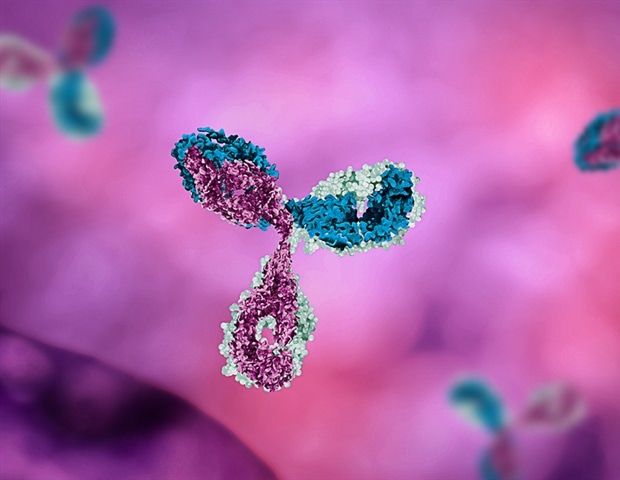Researchers uncover how specific genetic and cardiovascular traits give Tibetan women an edge in surviving and thriving at high altitudes, linking better oxygen delivery to more successful pregnancies.
 Study: Higher oxygen content and transport characterize high-altitude ethnic Tibetan women with the highest lifetime reproductive success. Image Credit: sanyanwuji / Shutterstock
Study: Higher oxygen content and transport characterize high-altitude ethnic Tibetan women with the highest lifetime reproductive success. Image Credit: sanyanwuji / Shutterstock
In a recent study published in the journal PNAS, researchers explored how characteristics related to oxygen delivery among ethnic Tibetan women between 46 and 86 and living in high altitudes in Nepal are related to their number of live births. Their findings indicate that women showing better oxygen delivery to their tissues had the highest reproductive success during their lifetimes, particularly those who gave birth early and had long marriages.
Background
Studying how natural selection affects adaptive traits requires combining data on genetics, physiology, sociocultural factors, and reproductive history. For this reason, human communities that are exposed to stress over long periods, such as those that experience hypoxic conditions at high altitudes, are ideal for researchers to study natural selection. Tibetan people have been exposed to high-altitude conditions for approximately 10,000 years and have distinctive biological characteristics related to oxygen delivery, which help them adapt to hypoxia. These include low hemoglobin concentrations, high ventilation, high blood flow, and low pressure in the pulmonary arteries, making them distinctive from other groups who also live in high-altitude regions, such as Andeans.
While pregnancies in high-altitude regions are associated with increased risks of low birth weight and preeclampsia, raising infant and maternal mortality, Tibetan women often have heavier infants and show higher levels of oxygen saturation, lower hemoglobin concentration, and improved uterine blood compared to migrants to high-altitude regions. These traits are associated with more live births, suggesting natural selection is acting on oxygen delivery. Several genes show signs of selection in Tibetans, which are crucial to the body’s response to hypoxia.
About the study
In this study, researchers examined how cardiovascular, hematological, and respiratory characteristics in 417 Tibetan women living at high altitudes between the ages of 46 and 86 were associated with their reproductive success, measured by the number of live births they had. They also assessed the genetic mechanisms that underlie these characteristics. The study population comprised ethnically Tibetan women who are Nepali citizens living in villages at 3,500 to 4,100 meters altitude and only included those who had been married or pregnant and had lived in the Upper Mustang District their entire lives. Approximately 94% of the participants had no schooling, and more than 40% had used contraception to prevent pregnancy.
Researchers collected measurements through heart rate tests, echocardiography, and anthropometric tools. During data analysis, the models were reduced to 50 potential predictors, including altitude, contraception use, and age. Specific cardiovascular measurements, such as the diameter of the left ventricular outflow tract (LVOTDiamIndex), were identified as critical factors in predicting reproductive success, emphasizing the importance of effective oxygen transport.
Findings
The 417 women reported 2,193 pregnancies, resulting in 2,076 live births, 46 stillbirths, and 71 miscarriages. Women had an average of 5.3 pregnancies and 5.2 live births, ranging from 0 to 14 live births. Pregnancies and live births showed a high positive correlation of 0.97.
Women over 63 had the most live births, likely due to having children before family planning technology became accessible. The key predictors of more live births included longer marriage durations, earlier ages at first birth, low heart rate recovery rate, intermediate hemoglobin concentration around 13.4 g/dL, and high oxygen saturation. This intermediate hemoglobin level was critical because both lower and higher concentrations were linked to fewer live births—either due to insufficient oxygen delivery or increased blood viscosity that could impair circulation. Larger diameters in the left ventricular outflow tract, particularly in those who had twins, were also significant predictors of reproductive success. These findings highlight the role of better oxygen transport in the number of live births.
Parametric analysis showed that heart size, oxygen transport traits, and age are significant predictors, while tree-based analysis also identified variables such as age at first pregnancy and the duration of marriage. However, pulmonary and respiratory traits did not predict reproductive success, potentially due to the older age range of the study participants or differences in measurement protocols compared to younger Tibetan samples. Genetic analysis also linked the number of live births with heart rate recovery, hemoglobin concentration, and oxygen saturation, emphasizing the role of specific genes like EPAS1, which is crucial for maintaining oxygen homeostasis at high altitudes.
Conclusions
Researchers hypothesized that characteristics related to the delivery of oxygen would predict reproductive success and show genetic associations. Their findings support this hypothesis, with cardiovascular and hematological traits predicting more live births. However, pulmonary and respiratory traits did not have good predictive power, which could be due to measurement methods or age differences. For example, while younger Tibetan populations have shown distinctive pulmonary traits, these did not translate to higher reproductive success in this older cohort, suggesting that other cardiovascular factors may take precedence with age.
Intermediate hemoglobin concentration was found to be an important predictor. Low hemoglobin levels reduce live births due to insufficient oxygen, while high levels may cause health issues by increasing the viscosity of blood. The optimal hemoglobin concentration of around 13.4 g/dL aligns with the mode observed in the sample, suggesting a balance that supports oxygen delivery without raising blood viscosity—a factor crucial to maintaining cardiovascular health under hypoxic stress. While researchers used multiple analyses to increase confidence in their key findings, they were unable to infer causality, and the relatively small sample size limits the ability to detect subtle genetic effects. The study’s limited genetic analysis suggests a need for larger-scale studies to validate these findings and uncover more nuanced genetic relationships with reproductive success.
Overall, effective oxygen transport systems were key to reproductive success and survival in high-altitude regions, with this research providing insight into human adaptation to hypoxia and natural selection. This study highlights the complex interaction between genetics, physiology, and environmental adaptation, demonstrating that maintaining effective oxygen delivery is a multifaceted challenge influenced by a range of cardiovascular traits.
Journal reference:
- Ye, S., Sun, J., Craig, S. R., Di Rienzo, A., Witonsky, D., Yu, J. J., Moya, E. A., Simonson, T. S., Powell, F. L., Basnyat, B., Strohl, K. P., Hoit, B. D., & Beall, C. M. (2024). Higher oxygen content and transport characterize high-altitude ethnic Tibetan women with the highest lifetime reproductive success. Proceedings of the National Academy of Sciences, 121(45), e2403309121. DOI: 10.1073/pnas.2403309121, https://www.pnas.org/doi/10.1073/pnas.2403309121

 2 hours ago
1
2 hours ago
1











%2c_analyze_by_microscope-Jarun_Ontakrai_8864dd9cfb3b4dff9a913aede7a7c915-620x480.jpg)




.png)

.png)
.png)
.png)













 English (US) ·
English (US) ·  Hindi (IN) ·
Hindi (IN) ·